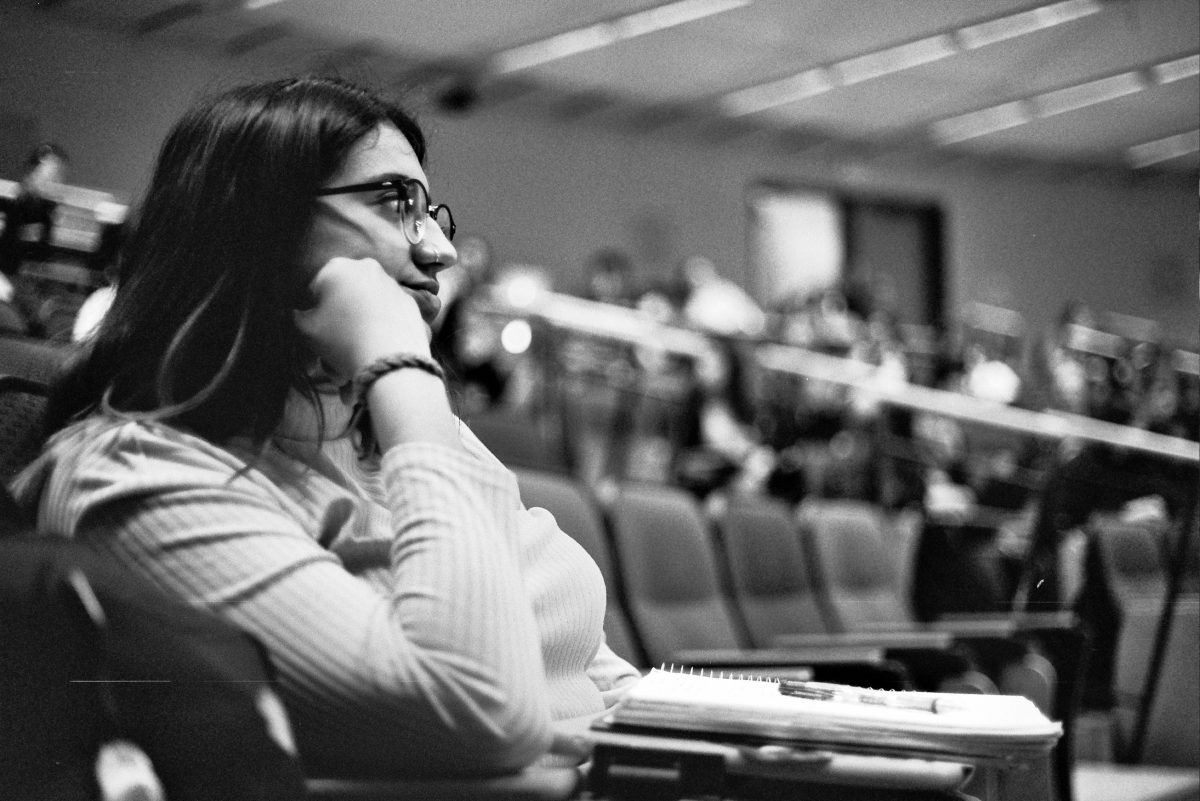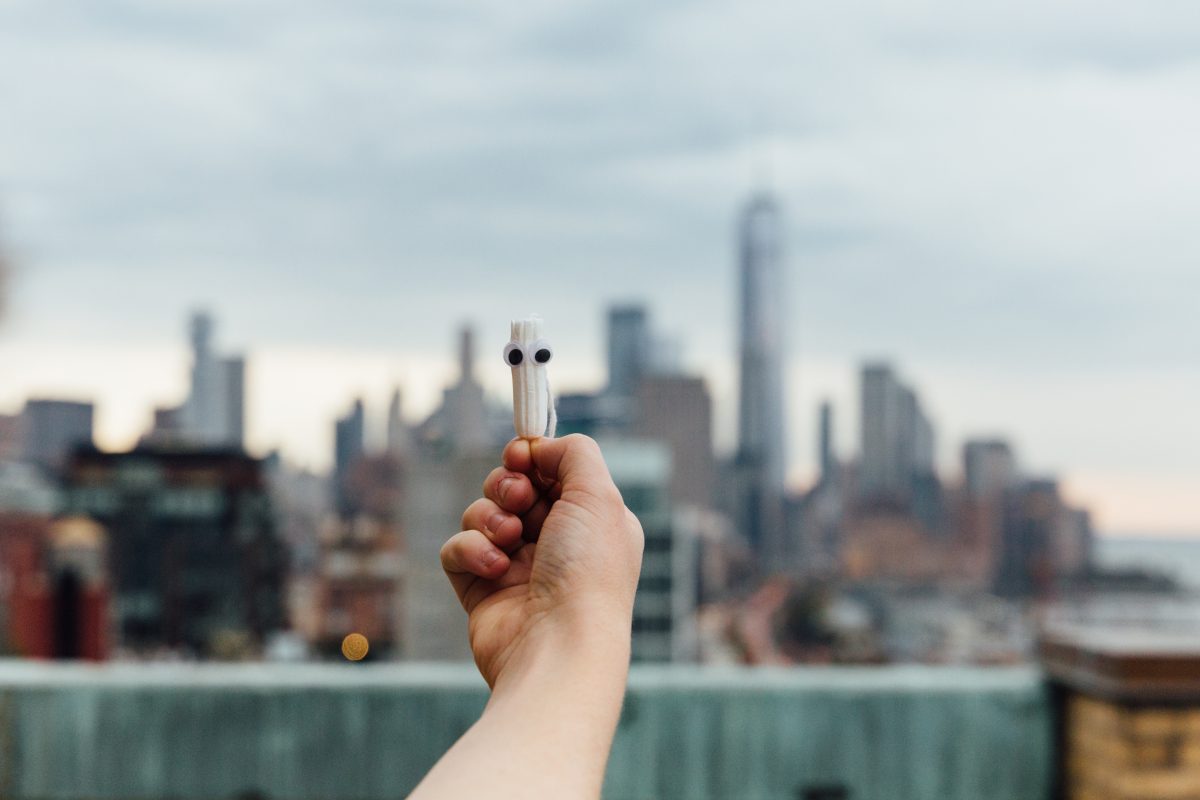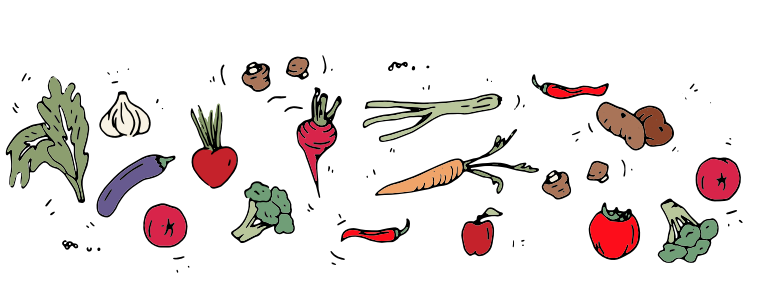When Marian Fragoso Basauri looked around the group of girls surrounding her during a freshman year “Introducktion” session, the demographics were obvious. Nearly everyone around her was white, and Marian was one of few students of color.
This environment was new to her. She was born and raised in Tijuana, Mexico. She did, however, attend a predominantly white high school in Beaverton, Oregon.
“In Beaverton, I didn’t feel that whiteness shock because I would go back home and speak to my aunt and uncle in Spanish,” Marian said. “My aunt would cook Mexican food, and even though I was away from home, I still had that part of me. When I came to college, it was completely different.”
Her experience as a person of color at the University of Oregon was difficult to navigate, but her identity helped her become more involved with her community politically. She joined Muxeres and MEChA, two of the biggest Latinx groups on campus that discuss issues Latinx and Chicanx students face.
Through mutual friends, I met Marian during my junior year of college. One of our first conversations was about my own experience as a person of color—as someone who is mixed-race—and what it meant to be “Mexican enough.”
However, before I came to college, I didn’t realize what it meant to be a person of color. The first encounter I had that involved my race was at my job when I was a freshman. I had noticed an older white man, a temporary worker, staring at me for a long period of time, and he soon came up to me with a smile and asked, “Hey, what are you?”
The question caught me off guard. No one had asked me this question before. At first, I did not know how to answer him. I replied, “What do you mean, ‘what am I?’”
“I’ve been trying to figure out your ethnicity but can’t seem to.”
“Oh, I’m Mexican and Irish,” I said quickly, to escape the conversation. I then went back to work.
This encounter left me with a strange feeling. It reminded me of being young and seeing a strange insect that I could not identify and asking my mom what it was, while I pointed at it in fear. Suddenly, it felt like someone was questioning and pointing at me.
I kept thinking about the question, “What am I?” I know that I am brown, and my mom is white, and my dad is Mexican. Growing up in Southern California, I encountered a multitude of races and ethnicities on a daily basis. No one had questioned me about my skin color back home. But then, I had to remember that I was no longer in a multicultural environment. It was in this homogenous area—Eugene—where I first began to think about what it means to be a person of color and what exactly this identity entails.
This encounter marked the beginning of my self-discovery, but I soon felt frustrated. I began to wonder where I belonged in the Latinx community as a mixed-race individual. I am culturally white because I was raised by my white mother, yet I cannot pass as white and do not have white privilege. On the other hand, I did not know anything about my Mexican culture or heritage until I started school. I began to question whether I was Latinx enough to even associate myself with the community.
During this time, I wrote a poem discussing my feelings about being mixed-race and what it felt like, belonging to two different worlds. I showed it to Marian when we first talked about our identities.
“I remember feeling identified because I grew up in the border, and being from the border, it’s Mexico, but it’s not really Mexico because it’s super Americanized,” Marian remarked. “There’s this saying ni de aquí, ni de allá, which means neither from here, nor from there, and that’s how I felt.”
Because of the lack of total belonging, I described in my poem, I was at first hesitant to go to spaces such as MEChA and Muxeres. When I voiced my concerns to Marian, she quickly dismissed them, saying, “You should go because that’s your people. We would receive you with open arms.”
Marian understood where I was coming from and knew other mixed-race people who felt the same. She reassured me that I still belonged in the Latinx community because no one would ever measure to see if I was “Mexican enough.” I soon began attending MEChA and Muxeres meetings regularly and immersed myself in the community. I began to understand what it means to be a person of color.
As I was becoming more active in the Latinx community, I noticed that Marian always had people surrounding her, and when she spoke, people stopped and listened. It was easy for me to tell that Marian was a natural leader in student group settings and also deeply passionate about social and racial justice. For this reason, I chose to photograph Marian. She has a story to tell—about what it means to be a person of color on a primarily white campus—and a brave voice to tell it.
Marian spends most of her time at Muxeres office in the Multicultural Center. As the External Director, one of her goals is to continue to create a safe community for Latinx individuals where they can discuss their experiences.









![[Photo Courtesy of the Lara Family]
Ruben embraces his beloved childhood goat, Katrina.](https://ethos.dailyemerald.com/wp-content/uploads/2025/05/katrina-1-1060x1200.jpg)


